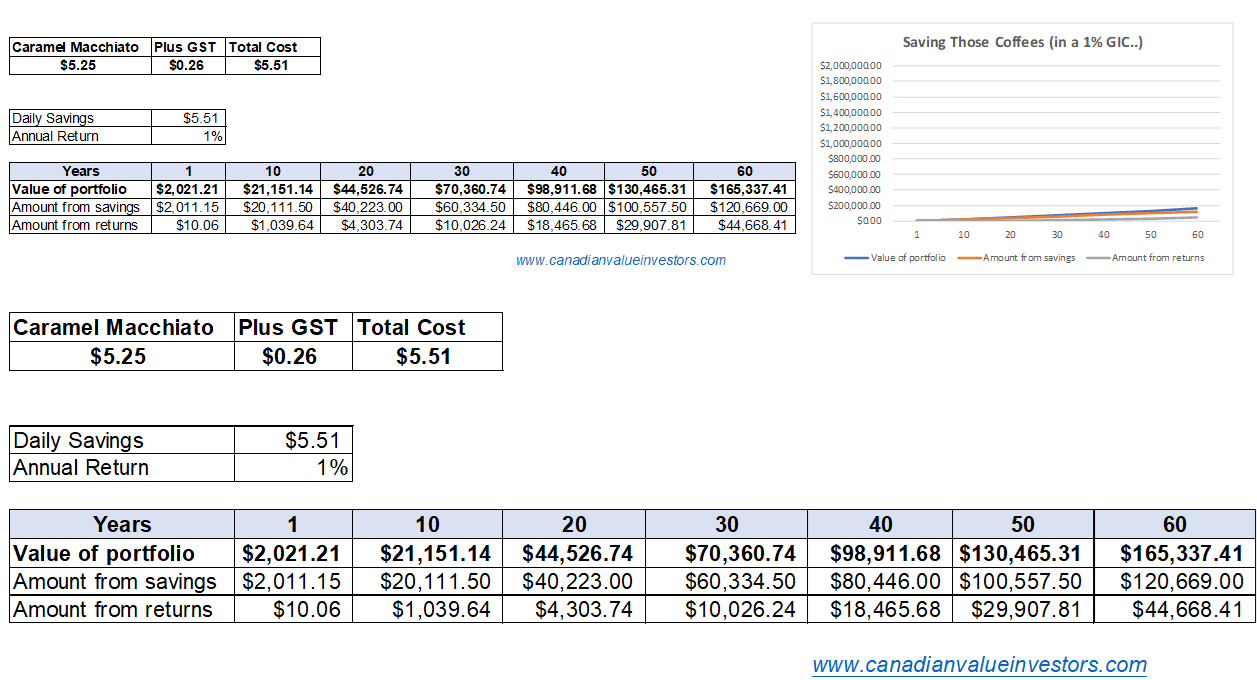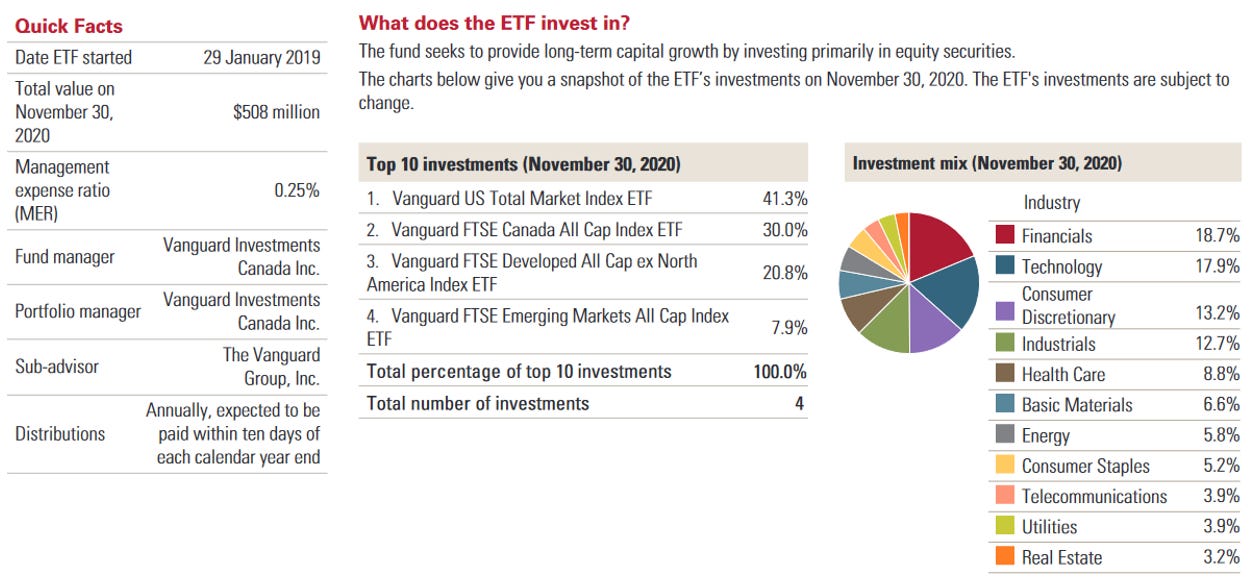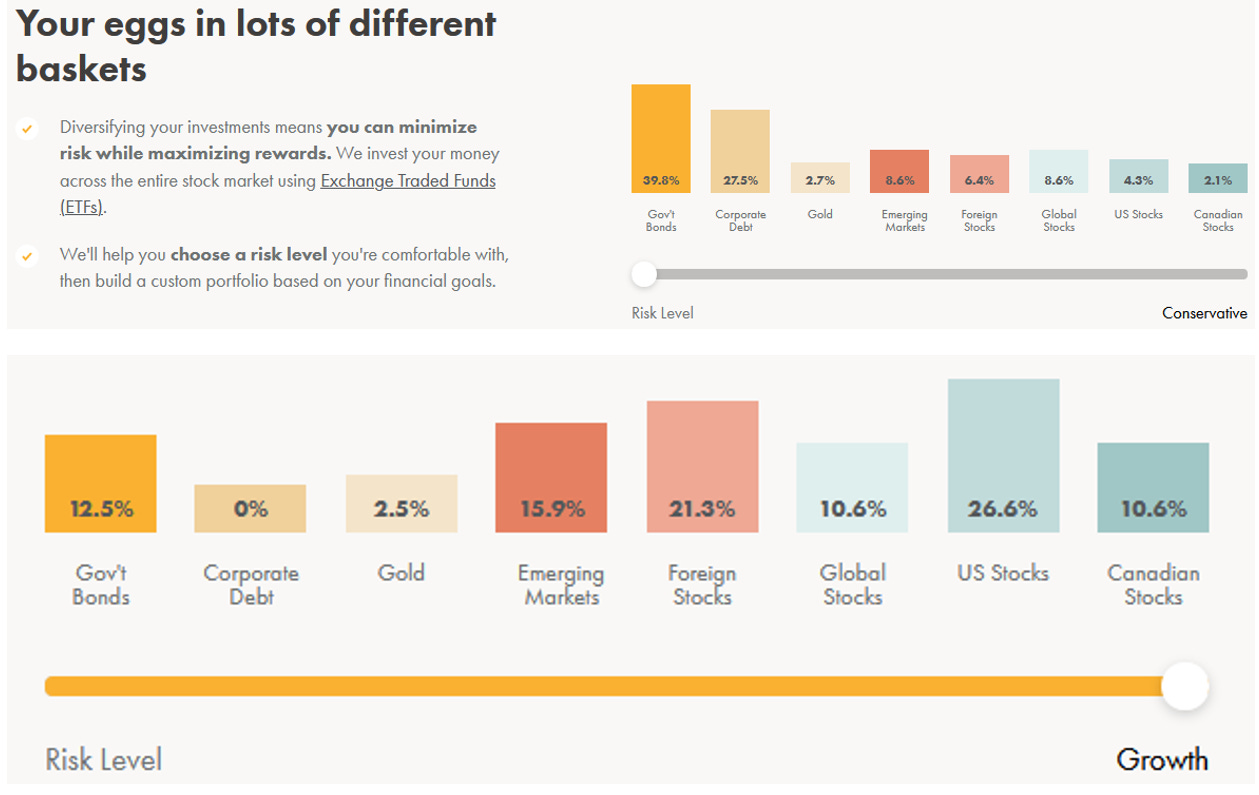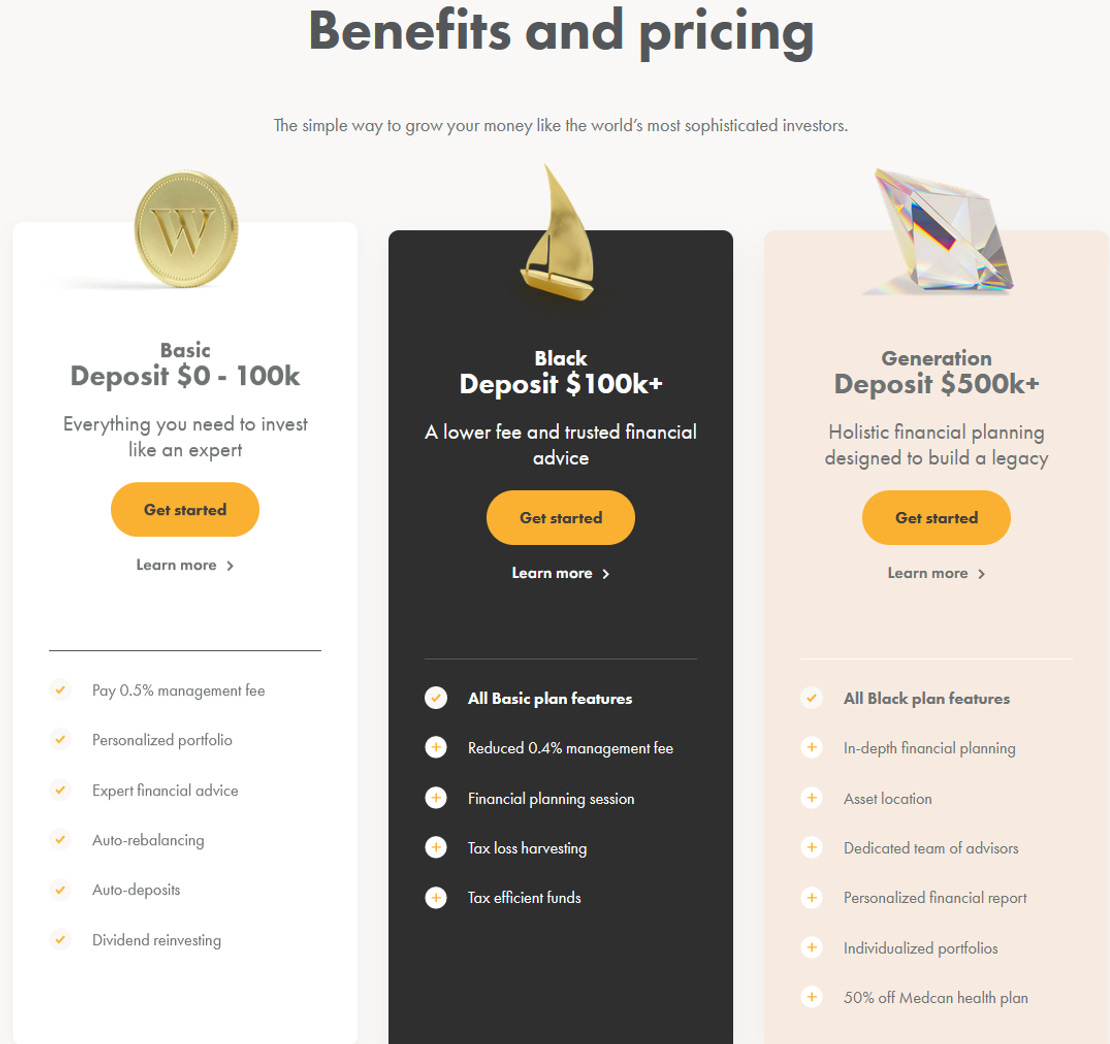Personal Finance 101 – How to start saving and investing from scratch
Disclosure: The following are just our thoughts about how to start getting into investing and might not necessarily apply to your own personal situation. Always do your own due diligence from multiple sources of information and seek professional help, particularly if your financial situation is complicated!
We have had a lot of people ask us over the years about how to get started in investing. We don’t mean how to value a stock. We mean actually setting up an account that you put a few dollars a month into. This article is intended for these people who are just starting to save and invest (which is a bit different than our core audience). If you are one of these people, read on! If you are already investing but want to get into stock analysis, our Value Investing 101 guide is where you want to go – https://www.canadianvalueinvestors.com/value-investing-101
There are two key steps we are here to talk about:
Part 1: Why you should save and how
Part 2: How to start investing your savings
Part 1: Why you should save and how: The psychology of investing
Issues that commonly come up for why someone hasn’t started investing yet:
1. It is hard to save.
2. It is hard to start investing those savings.
3. It is hard to manage investments when you have no experience doing so.
It is hard to save. But is it true that “millennials are broke because they buy coffee and eat avocado toast”?
Are millennials really broke because of fancy toast? We think it is unlikely that there is more than one person – but likely someone - that has been financially ruined by avocado toast. But, this flippant comment glosses over the fact that small amounts of saving – even coffee-skipping-levels of saving – over a long period of time can lead to significant amounts of wealth. The problem is that it takes a long time and the first few years suck. Let us use an example.
What happens if you really did stop buying one Starbucks caramel macchiato a day and instead invested?
A short caramel macchiato from Starbucks is $5.25 plus GST (at time of posting; we’ll skip adjustments for the poor folks living with HST), which would be saving the equivalent of $1,916.25/year.
Here’s the math. The first several years suck, but then compounding takes off. If you start saving $2,000 a year, your returns would be ~$9,000 over the first ten years, but explode to $47,000 over the second 10.
Albert Einstein supposedly said, “compound interest is the eighth wonder of the world.” You can use this wonder every day. Unfortunately, it works exactly the same but in the opposite direction when it comes to having debt.
To put it another way, your portfolio after ten years would be worth ~$30,000 and your expected return for year 11 would now be about ~$2,000, i.e. you are now making more from returns than you are saving every year on average. If you are making $40,000 a year, this ~$2,000 return/year would be equivalent to more than two weeks of pay without lifting a finger.
Over a lifetime of investing the power of compounding takes over and the returns in later years far outstrip the amount you have saved and you would indeed end up a millionaire. In Canada this would also be completely tax-free if you invested through a Tax Free Savings Account (TFSA) or at least tax-delayed if using an Registered Retirement Savings Plan (RRSP, tax credit upon deposit, taxed on withdrawals).
Even small amounts can get you somewhere. Do not fret about where you are today. The key is to just start with whatever you can, and thankfully today you really can start with just $5 (see next section on how to start). Let your money work for you and give it some time.
Side note: We think the government should have called the Tax-Free Savings Account (TFSA) a Tax-Free Investment Account (TFIA) to avoid a lot of misunderstandings and encourage people to invest. It is not just a “savings account”, you can invest in stocks if you set up an account with a broker (see next section).
Historically the S&P 500 Index (an index of the 500 largest companies in the U.S.) has returned an average of 7-10% (depending on what timeframe you use), and above for our example we assumed 7%. Of course, as shown below, if you stick to Guaranteed Investment Certificates (GICs)/a savings account despite intending to invest for decades, things likely won’t work out nearly as well. We also know your bank would love for you to keep it in GICs/savings account, which should tell you something. We hope this covers off why investing is better than putting everything into Guaranteed Investment Certificates.
If you have a hard time saving, some practical tips include:
· Find a way to start regardless of circumstances. As money manager Mohnish Pabrai says, “thou shall always have a rope to climb out of the deepest well” - https://www.canadianvalueinvestors.com/the-ten-commandments-of-investment-management-mohnish-pabrai. You need to give yourself a rope to get out of the hole. Once you have a roof over your head and food, find a way to set aside $50 and open an account even if you have student loans, because the psychological benefit of starting will outweigh any interest savings from paying down another $50 of debt. Like many things in life, the hard part is starting. Once you do start and see the amount start growing, it creates a positive feedback loop of thinking longer term, having more savings, and overall better habits. Once you start, then you need to budget and balance your priorities based on your circumstances.
· Create a benchmark/goal that works for you. It is not worth comparing yourself to anyone else, especially with money. As Charlie Munger says, “envy is a really stupid sin because it's the only one you could never possibly have any fun at.” It is better to compare yourself to where you were yesterday. For example, you could make your goal be to save the equivalent of one hour of work at your job per week. That one hour of work you have invested is now working for you every single day of the week for the rest of your life no matter what you are doing. Then, keep track over time, say once a month or every six months, and watch your net worth grow. On the flip side, checking frequently is often counter-productive. The important thing is how you and your wealth are growing over 5-10 years, not daily swings.
· Make it easy to save and put the money out of sight. For example, set up an automatic deposit into your investment account scheduled for every payday.
· Increase that deposit. Get a raise? Switch to a higher paying job? Have a one-off side job? This is money you did not have before, so the pain of not seeing/spending some percentage of the money is very low.
Part 2: How to start investing your savings
Looking back to Economics 101 and adjusting, we view there are actually three sources of wealth: 1) Your labour/labor 2) Your investments, and 3) Your luck (hello lottery winners).
A lot of people we meet get stuck using only tool #1. For example, we know of a plumber who was proud of diligently saving a few hundred thousand dollars – great job! – but is keeping everything in a savings account that is paying almost nothing. Horrifying, when you consider that the annual returns from the portfolio would start to outstrip his work income over time if he just invested. Despite how easy it is to start investing responsibly now, a lot of Canadians still do not.
We view there being three broad strategies for investing:
1. Index investing, with two sub categories:
a. Self-managed index investing
b. Low cost robo-investing/autopilot investing
2. “Stock picking” (ideally concentrated; our website’s focus) – This requires a lot of time and skill.
3. Overpaying for an “active advisor/mutual fund/ETF”
Here we address #1, which can be done by everyone. If you are interested in #2, we suggest looking at our Value Investing 101 guide - https://www.canadianvalueinvestors.com/value-investing-101. For discussion of #3, why paying someone lots of money to buy a little bit of a few hundred “special stocks” instead of just buying the index, and why it becomes statistically impossible to make up those fees, see our Concentrated Investing section in this 101 guide.
Index Investing was pioneered by Jack Bogle who created Vanguard, which is now one of the world’s largest money managers currently managing about $4 trillion dollars. The concept is simple: you divide your portfolio into thousands of publicly listed companies weighted to their proportion of the index and at a very low cost. Your return will nearly meet/not beat the market, but most active investors beat the market either.
Fees matter. Years ago, small investors had to buy high-cost mutual funds that typically had fees of about 2%+ of your portfolio every year regardless of the actual return. Now you can invest for fees that are a fraction of that. It might not sound like much of a difference, but over a lifetime of investing at average returns you would end up with over 50% more net worth as we show below. Thankfully… for the banks, many Canadians are still paying fees that are too high! If you decide to outsource, we recommend using a money manager who will use low-cost ETFs and do not recommend high-cost mutual fund salespeople and advisors.
Indexing investing has become extremely easy to manage by yourself now regardless of skillset, but there are important caveats.
The benefits are clear:
· No portfolio management fee – Although there are low-cost money managers (see next section), they will still charge something to manage your investments.
· If you self-manage, you have the opportunity to choose lower cost Exchange Traded Funds (ETFs) than the money managers might use, saving even more on fees.
· You can set your own diversification strategy to exactly what you want at any time using the ETFs/stocks you want.
The downsides:
· You have to start it and manage it – This takes a bit of time and a bit of skill development.
· You have to have the right mindset – This is in our view an often overlooked/greatly underappreciated issue. The point of index investing is to “set it and forget it”, continually invest more as you save more, and continually rebalance to your target allocations (see next). If you logged into your account and saw it was down 1%, would you get upset? What about 10%? The stock market has historically provided returns and grown over time, but not in a straight line and the wobbles can be wild. There is no point saving a bit on fees if you are just going to log into your account in the middle of the latest panic and sell at the bottom. There is a lot of value for some people to have an account that is automatically invested and rebalanced in the background while you go on with life.
Strategy #1 – Self-Managed Investing
What You Need – Two Things:
· #1 Choose a Broker
· #2 Choose the Exchange Traded Funds (ETFs) you want
The Broker
If you are just buying ETFs, every major Canadian broker will work. Some are still better than others. We personally recommend Qtrade. Their reporting is pretty good, the app works, trading is easy and relatively low cost, and their customer service is nice if you need something. The Globe and Mail does a ranking of brokers once a year. Here’s the 2021 ranking (Qtrade ranked #1):
The ETFs
The standard approach is to buy a mix of stocks and bonds to maximize risk-adjusted returns, a fancy phrase to say maximize gains while minimizing potential losses. Guides often encourage quite a large percentage to be invested in bonds (some say 70% for a “conservative person” for example). We have two issues with this: #1 Current unprecedentedly low interest rates make bonds extremely unappealing on a risk-return basis. #2 They often overlook the benefits of thinking in terms of creating generational wealth (see our earlier example of GICs vs stock investing above). For ourselves, we plan to invest for decades and to benefit the next generation as much as we can, and so we operate with nearly 100% equity. That said, this is not our advice for you; we do not know your circumstances or psychology and you must do your own due diligence!
As we note above, Vanguard is the pioneer of index investing and their offerings are very low cost and they have great options for Canadians to invest internationally through the Toronto Stock Exchange. In fact, you can now build a worldwide equity portfolio with just one ETF!
Option 1 - The no brainer approach:
· Buy the Vanguard All-Equity ETF (VEQT) for equity exposure, and
· Buy the Vanguard Canadian Aggregate Bond Index ETF (VAB) for bond exposure
· Pick a ratio of the two based on your personal risk tolerance and investment timeline. For example, if you are young or think about wealth in a multi-generational sense and have a high risk tolerance, the equity component should likely be a very high percentage (your mileage may vary; seek professional advice if unsure). Buy periodically with new savings to rebalance and get back to the ratio you choose. Note that the important thing is to start. You can always change and rebalance as time goes on.
The Vanguard All-Equity ETF is a new ETF that is actually just buying four of their other ETFs in a relatively fix ratio, those other ETFs being:
· Vanguard US Total Market Index ETF
· Vanguard FTSE Canada All Cap Index ETF
· Vanguard FTSE Developed All Cap ex North America Index ETF
· Vanguard FTSE Emerging Markets All Cap Index ETF
We provide their breakdown of the All-Equity ETF below, and you can find the full fact sheet from Vanguard here:https://www.vanguard.ca/en/advisor/products/products-group/etfs/VEQT
Bond ETFs Note: We suggest Vanguard’s Canadian Aggregate Bond Index ETF (VAB), which is a mix of high quality short and long-term government and corporate debt. If you are worried about credit quality and/or inflation, another alternative is the Vanguard Canadian Short-Term Bond Index ETF (VSB), which invests exclusively into short-term (<5 years) Canadian government debt.
https://www.vanguard.ca/en/advisor/products/products-group/etfs/VAB
https://www.vanguard.ca/en/investor/products/products-group/etfs/VSB
Option 2 – Buy the four equity ETFs individually in the ratio you choose. Maybe you want less exposure to Canada because you already own real estate here, or maybe you are bullish in developing markets! It’s easy to adjust at anytime.
You can find all of their ETFs here – https://www.vanguard.ca/en/advisor/products/products-group/all-products?tab=overview&productType=etf
A note on “free trading in ETFs*****” that some brokers offer – Most brokers offer free trading on certain ETFs and the list is often pretty large, but often does not include the ETFs that have the lowest management fees… Curious isn’t it? If you use this trading strategy of 1-4 low cost ETFs and you rebalance infrequently, it will still likely be cheaper than buying free-trade-but-high-cost ETFs for relatively small amounts of money (a few thousand) and guaranteed to be cheaper for larger amounts. If you are just starting at the $5 coffee club level, look for and stick with ones that are 1) closest to simple index funds and 2) free to trade, as the trading commissions (~$5-10 per trade depending on the broker) would offset savings on ETF fees for quite a while; once you save up more, then switch (the key is to start). Qtrade offers a list of trading-commission-free ETFs - https://www.qtrade.ca/en/investor/pricing/free-etfs.html
Strategy #2: Robo-investing Example – Wealth Simple Overview
Having someone manage your money can be very helpful for a few reasons. First, it reduces the psychology problem mentioned above. Some also provide very good accounting and tax planning/reporting, which can be very helpful if your situation is complicated due to other assets (multiple properties, wholly owned businesses, family trusts, etc). That said, if things are simple, then a simple low-cost robo-advisor is likely best. There is value in a very good money manager (e.g. Warren Buffett!), but the way most of the active retail advisors and mutual funds work they do not add value. Getting stuck with high costs and high fees to have someone do shadow indexing (i.e. having a portfolio that performs similar to, or worse (!), than low-cost index funds) when you can do it yourself so simply these days is just silly.
Robo-advisors typically charge an investment account management fee, and in Wealth Simple’s case it is 0.4%-0.5% of assets under management depending on how much you have there (see their account types below). However, remember that there are also fees charged by the ETFs that they invest your money in. If you manage things yourself (as discussed above) you will still have to pay these imbedded fees in ETFs but you would save on the investment account management fee.
Note that whoever you choose, ensure that they are also buying low-cost ETFs. Banks salespeople often offer their own higher cost in-house ETFs and mutual funds to clients, and we doubt whatever they suggest would outperform a low-cost index ETF over a ten-year period after fees.
There are numerous robo-advisors in Canada, but our go to suggestion is Wealth Simple -
https://www.wealthsimple.com
. Wealth Simple offers pre-set portfolios based on your risk tolerance. The ETFs they use are also relatively low-cost. As mentioned above, you can also create whatever mix you want if you self-manage. Below we show what the portfolio mix would look like if you are self-described “Growth” person.
Wealth Simple has three levels of accounts depending on the amount of assets you have under management with them.
Closing Thoughts
· Whatever you choose to do, the key is to invest early and often. “The best time to plant a tree was twenty years ago. The second-best time is today.” Do not fret about where you are today. Just start, and give compounding a chance to help you meet your financial goals.
· If you really are starting with $5.25 or a small amount of money in general, then a service like Wealth Simple might make sense as they can split up small frequent deposits and keep your allocations the way you want them. You can self-manage small amounts as well – deposits as low as $50/month can make sense – but be wary of trading fees. This is where using free ETF trading can make a lot of sense even if it is not with the best ETFs. You can always switch into lower cost ETFs later once you have saved more! Self-managing very small amounts is possible too. For example, Qtrade offers a list of trading-commission-free ETFs - https://www.qtrade.ca/en/investor/pricing/free-etfs.html
We hope that your investing career is long and profitable!












